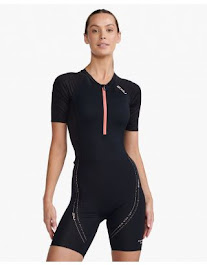The Future of Tri Suits Australia: Trends to Watch
For many years, tri suits have been a mainstay in the triathlon world, offering athletes a comfortable, aerodynamic, and practical solution to their racing needs. Tri suits have evolved into essential equipment for triathletes of all levels as technology, textiles, and design have advanced. As the sport of triathlon grows in popularity, so does the demand for high-quality tri suits. This blog will look at the trends to look out for in the future of tri suits Australia.
Sustainability
Sustainability has become a major focus in the sports industry, and triathlon is no exception. Athletes are becoming more ecologically conscious and interested in lowering their carbon footprint. Tri suit producers respond to this trend by employing sustainable fabrics, like recycled polyester and organic cotton. They are also introducing environmentally friendly industrial procedures and reducing trash.
Customization
For several years, the triathlon sector has seen an increase in customization. Athletes are seeking methods to customize their gear, whether through their design or the inclusion of their name or team symbols. Tri suits Australia manufacturers are responding to this trend by offering customization possibilities for their products, allowing athletes to design their unique suits.
Aerodynamics
Aerodynamics has always been a key factor in triathlon, and it is becoming even more important as athletes look for any advantage they can get. Tri suit manufacturers are responding to this trend by creating more aerodynamic suits than ever before. They use advanced fabrics, such as dimpled and aerofoils, to reduce drag and improve performance.
Comfort
Comfort is another key factor for triathletes when it comes to their gear. Tri suits must be comfortable for the athlete to perform at their best. Manufacturers respond to this trend using high-quality, breathable fabrics that wick away moisture and prevent chafing. They also use ergonomic designs and flatlock seams to reduce irritation and improve comfort.
Technology
Technology is advancing rapidly, and the triathlon industry is no exception. Tri suit Australia manufacturers are incorporating technology into their products to improve performance and provide a better experience for athletes. For example, some manufacturers use compression technology to improve blood flow and reduce muscle fatigue. Others are using heat-reflecting technology to keep athletes cool in hot conditions.
Durability
Tri suits are a significant investment for triathletes, and they need to be durable enough to withstand the rigours of training and racing. Manufacturers are responding to this trend by using high-quality materials and construction methods to create more durable suits than ever before. Some manufacturers are even offering lifetime warranties on their products.
Versatility
Tri suits are not just for racing anymore. Athletes use them for training, recovery, and casual wear. Manufacturers are responding to this trend by creating suits that are versatile enough to be used for a variety of purposes. They use comfortable and breathable fabrics while also providing support and compression.
In conclusion, the future of tri suits Australia is promising, with several trends to keep an eye on. Athletes can expect more inventive products that address their special demands while being environmentally and socially responsible.
The brands you should look for to invest in to meet the market's trendy demands are Orca wetsuits, Volare wetsuits & 2XU tri suits. And guess what? You can buy every gear brand from Trishack: your one-stop solution for every triathlon need.
So, what are you waiting for? There has never been a better moment to invest in a high-quality tri suit, whether you are a seasoned pro or a beginner.



Comments
Post a Comment